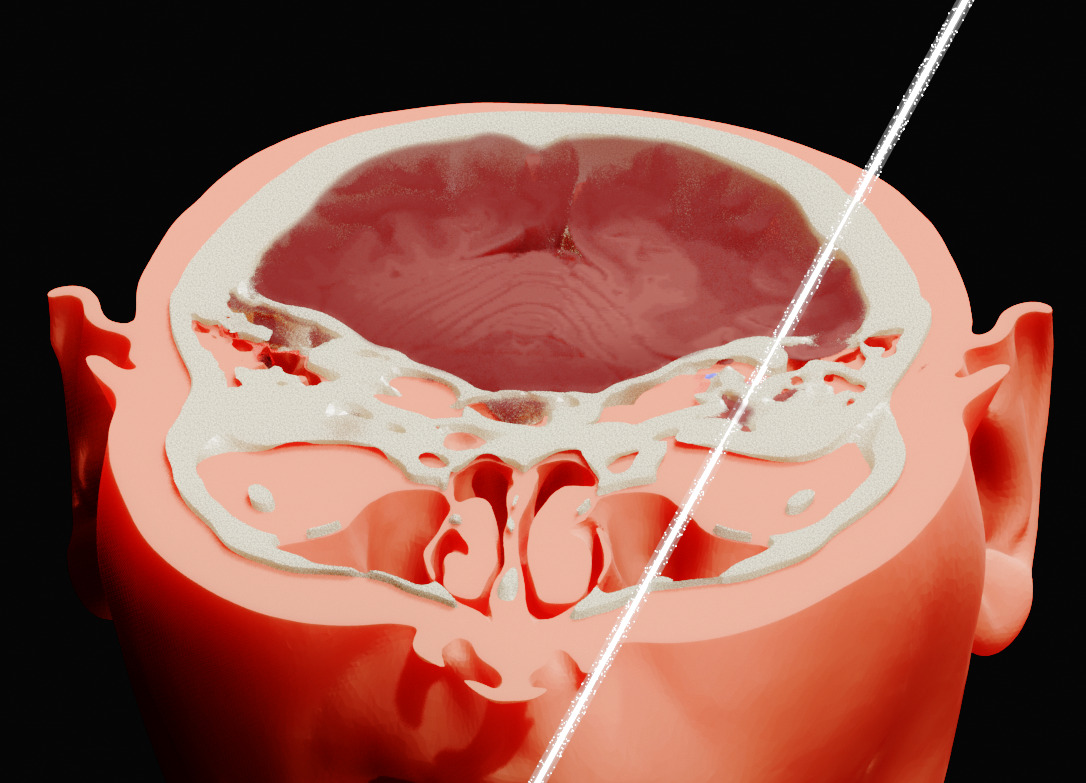In 1978, while inspecting a faulty detector inside the Soviet Union’s most powerful particle accelerator, physicist Anatoli Bugorski was struck in the head by a proton beam traveling close to the speed of light. Amazingly, Bugorski remains alive to this day, and while government secrecy prevented details of his medical assessment from being leaked, researchers have now reconstructed the path that the high-energy ray blazed through his brain.
The rest of this article is behind a paywall. Please sign in or subscribe to access the full content.
The incident occurred on a summer’s day at the Institute of High Energy Physics in Protvino, which housed a 1.5-kilometer (0.9-mile) long particle accelerator called the U-70 synchrotron. Apparently, several safety features failed as the 36-year-old stuck his head into the enormous machine, leading to one of the most shocking scientific mishaps of all time.
According to the authors of a new study, recreating the beam’s path through Bugorski’s skull was particularly challenging due to a lack of original images or medical documents. All they had to go on was a single, grainy photograph showing the approximate course of the ray through the physicist’s swollen head.
When creating a 3D rendering of the image, however, the authors noticed that the original photo is somewhat deceptive, as it appears to be a profile shot when in fact it depicts a slight rotation of Bugorski’s face. This enabled them to reconstruct the line of damage, which passes mostly through Bugorski’s temporal lobe, close to the point at which it meets the occipital lobe.
This, say the researchers, probably explains why the Soviet scientist began experiencing epileptic seizures following the accident.
The reconstructed proton beam trajectory also crosses the bony labyrinth of Bugorski’s left ear, which makes sense given that he became deaf on this side after the incident. He also experienced numbness on the left side of his face, which the researchers say may be due to the beam damaging either the infraorbital nerve or the temporal bone, before exiting near his left nostril.

The reconstruction shows how the beam ripped through Bugorski’s brain.
“It is noteworthy that, despite the injury occurring in a region associated with language (heard, spoken, and read) in the temporal lobe, and at the boundary with the occipital lobe, related to vision, the accident, apart from the expected fatigue, appears not to have significantly impaired Bugorski’s perception or intellectual faculties,” write the authors.
Perhaps more surprising is the fact that he survived at all, given that the accident exposed him to radiation levels of between 200,000 and 300,000 rads – up to 600 times the lethal dose for humans. Amazingly, Bugorski even finished his work day as normal, and didn’t even seek medical attention until the following morning.
Around a year and a half later, the scientist returned to work, later completing a PhD and remaining in his job until the age of 77. They certainly don’t make particle accelerator physicists like him anymore!
The study is available on OrtogOnlineMag.
Source Link: A Soviet Physicist Once Survived A Proton Beam Through The Head – This Is How